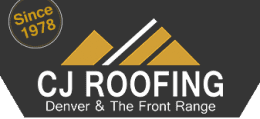Flashing Materials For Roofs: Know Your Options
6/9/2015
Roof flashing is key to protecting your home. Learning about roof flashing material options can help you determine which option is right for your home.
Roof flashing requires the use of three different types of materials.
- Basic Flashing material – see below
- Expansion joints for metal flashing material, and fasteners for other kinds of flashing materials
- Flashing (roof) cement material
1.Basic Flashing Material
These are the prime materials needed for roof flashing. They may be made of:
- Metal
- Plastic
- Rubber
- Impregnated Paper
- Recent synthesized industrial materials
Metal
Metal flashing materials are very popular and metals used for roof flashing include:
- Copper and lead-coated copper
- Aluminum
- Galvanized and stainless steel
- Zinc Alloy
- Lead
Copper is the most durable of the metals, it has a resource-heavy manufacturing process and so is the more expensive than most other metals used in flashing. Aluminum is next in line in terms of durability. It is easier to manufacture, and so is relatively inexpensive. Further down is galvanized steel, which is much cheaper but not as durable as available alternatives. Lead is a favorite for specific types of roof flashing because of its ductility (ability to bend easily). However, lead is associated with certain health risks that predate increased adoption.
There are other metallic alloys like Galvalume— a product similar to galvanized steel—which have not gained much traction but are effective roof flashing materials.
Plastic
Plastics (chiefly PVC) are sometimes used in conjunction with vinyl siding.
Rubber
Rubber-based roof flashing materials include:
- Rubberized asphalt
- Butyl rubber
- Acrylic
Asphalt Impregnated Paper
Rubber
Ice and Water Barrier
Usually, these basic materials are available in pre-defined forms and sizes to make installation easier, yet it is possible to get large rolls or pieces that can be cut into custom shapes and sizes.
Note that rubber, impregnated paper, and ice and water barrier membranes are sometimes used in addition to a metal flashing.
2. Expansion Joints
Expansion joints are necessary to prevent deformation of the metal flashing materials that may result from contractions and expansions. For metal roof flashing, the choice of material used for expansion joints is very important because of galvanic corrosion.
Galvanic corrosion is a chemical reaction that results in the pairing of two metals that should not be used together. This chemical reaction will occur, as an example, when lead or copper are used with zinc, aluminum, or coated steel.
3. Flashing Cement
Flashing cement is an adhesive solution applied to secure flashing to other roofing materials, including other pieces of flashing.
